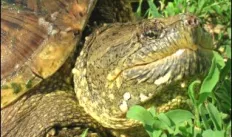Only when the last tree has died and the last river been poisoned and the last fish been caught will we realize we cannot eat money.
Cree Indian Proverb
The Iowa Chapter supports policies that protect Iowa’s wild lands, wild rivers and wildlife. We vigilantly monitor development proposals that affect significant natural areas.
Iowa has one of the most altered landscapes in the United States. We have plowed up, paved over and built on much of the terrain. In spite of that, prairies, woodlands, streams and rivers still provide habitat for native plants and animals.
Iowans often envy other states for their mountains and ocean beaches yet we overlook the unique features present in our own state. In western Iowa, the Loess Hills is a unique landform created from wind-born loess. Many of the plants in the Loess Hills cannot be found anywhere else in Iowa. On the eastern border, the Mississippi River bluffs provide spectacular views. Numerous prairie remnants dot the remainder of the state. The prairies teem with butterflies flitting among the prairie flowers during the summer months. The birds living in Iowa change with the seasons as they migrate through the state.
In Wildness is the preservation of the world
- Henry David Thoreau

Protection
Nothing is more thrilling than to see an eagle soaring, hear it chirp, or to catch glimpses of chicks in the nest. The bald eagle was close to extinction, due to exposure to the pesticide DDT. Under protection of the federal Endangered Species Act and the banning of DDT, the bald eagle has recovered and can be found across Iowa - nesting and wintering along rivers. Even with this success story, the bald eagle faces risk from exposure to lead shot.

Lead Shot and Lead Fishing Tackle are Toxic to Wildlife
Wildlands and wildlife policy summary
What's happening to the night sky?
Protecting Iowa's Vulnerable Wildlands and Wild Rivers
Keep Public Lands in Public Hands
Northern Tallgrass Prairie National Wildlife Refuge
Southeast Iowa Amphibian and Reptile Conservation Area
Use of ATVs, OHVs, ORMs, and ORVs
Iowa Public Land - By the Numbers

Funding
Support parks and recreation areas
Resource Enhancement and Protection (REAP), a state law enacted in 1989, provides the framework for funding to protect Iowa’s natural areas, soil conservation, water quality and historical resources. To learn more about REAP and funding of Iowa's parks, recreation areas, and natural areas, see Full Funding for REAP: Protecting Iowa's Natural Areas, Soil Conservation, Water Quality and Historical Resources
The Iowa Chapter of the Sierra Club believes:
- REAP should be fully funded at $20 million each year.
- REAP should be renewed and extended beyond 2026.
- The highest priority should be put on preserving natural areas, sensitive areas, special places, and protecting river corridors. Less priority should be put on building structures and hard-surfaced trails.
- The REAP formula should remain the same.
- The 3/8 cent sales tax that funds the Natural Resources and Outdoor Recreation Trust Fund should be implemented, with no changes in the funding formula.
Funding water quality and the Department of Natural Resources with a 3/8 cent sales tax with no changes in the funding formulas - It is time to fund water quality and to create a sustainable revenue source for the Department of Natural Resources. The best way to do this is to implement the 3/8 cent sales tax that Iowans approved in 2010 by 63 percent of the voters, using the current funding formulas. Article VII Section 10 of the Iowa Constitution created a Natural Resources & Outdoor Recreation Trust Fund (Trust) that is to be supported by a sales tax of 3/8 of one cent. This trust fund is to be used “for the purposes of protecting and enhancing water quality and natural areas in this State including parks, trails, and fish and wildlife habitat, and conserving agricultural soils in this State.” Read about 3/8 cent sales tax funding




























